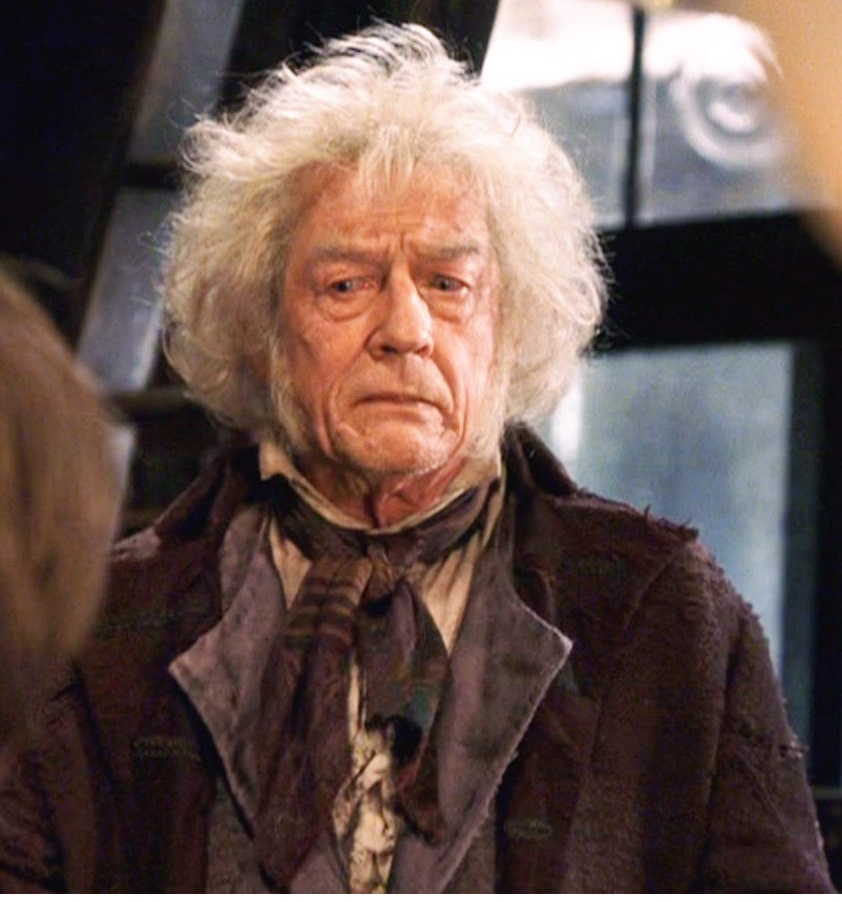


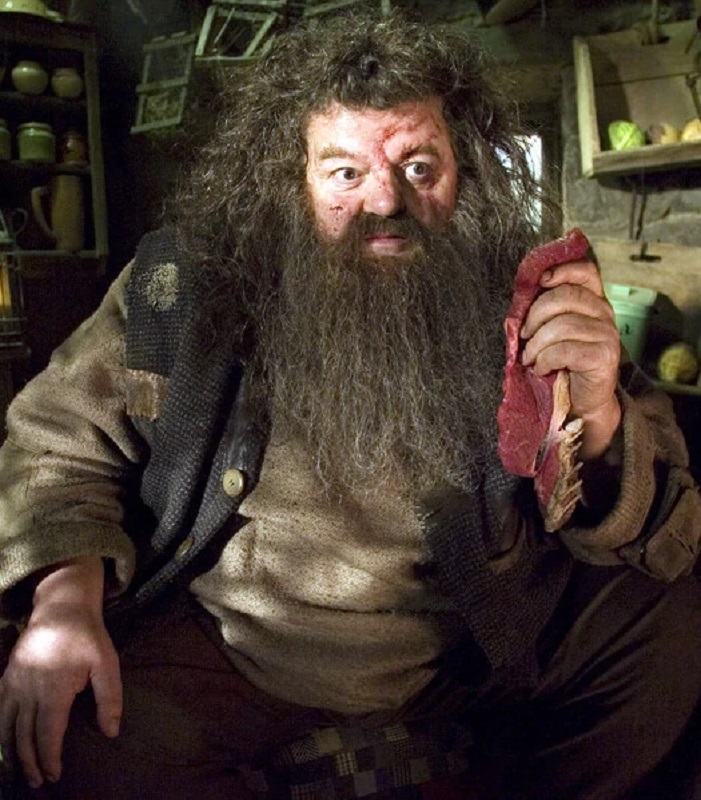

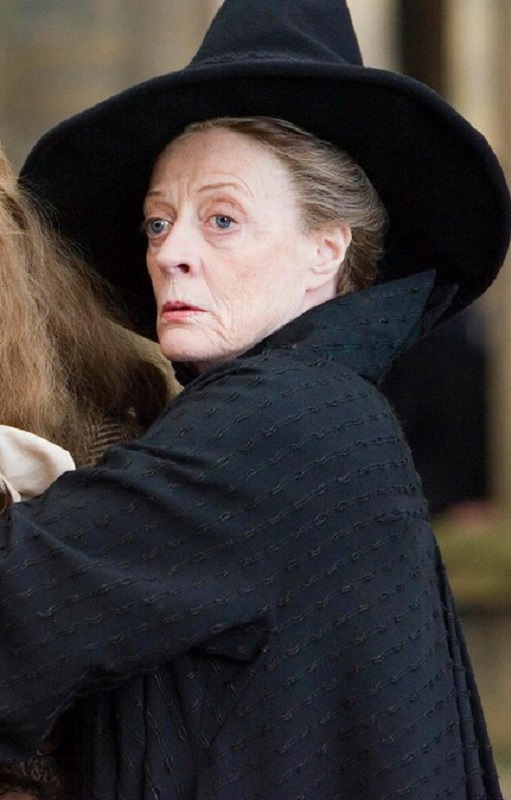




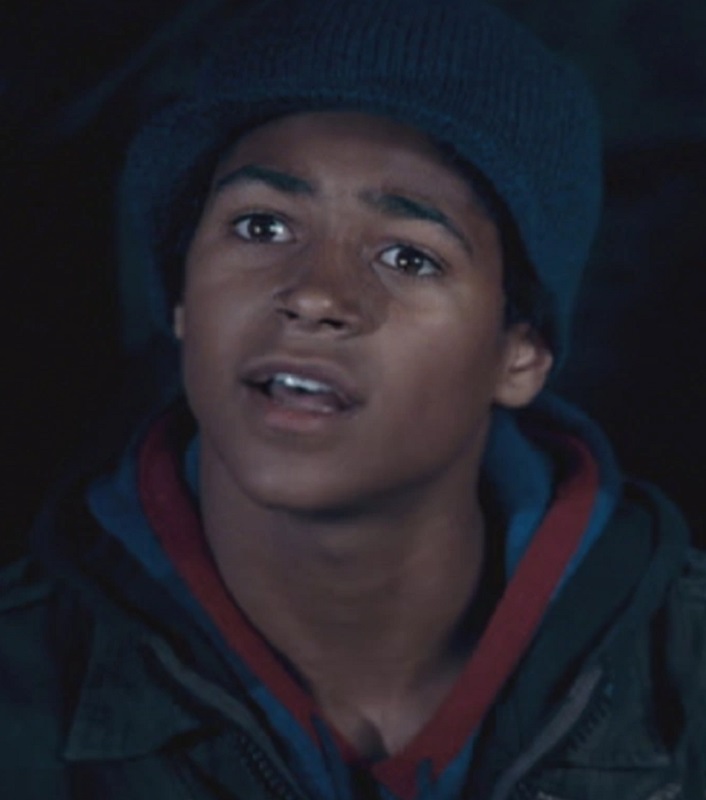



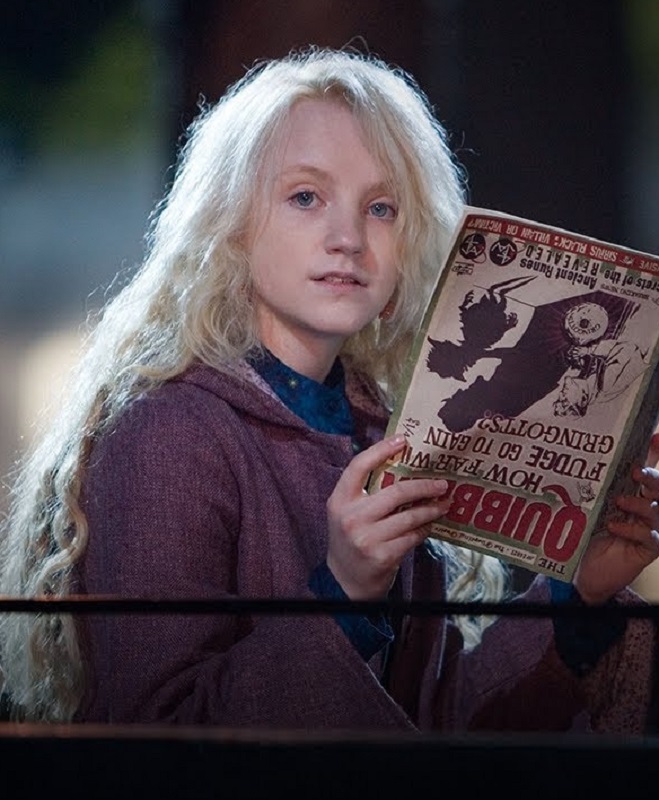


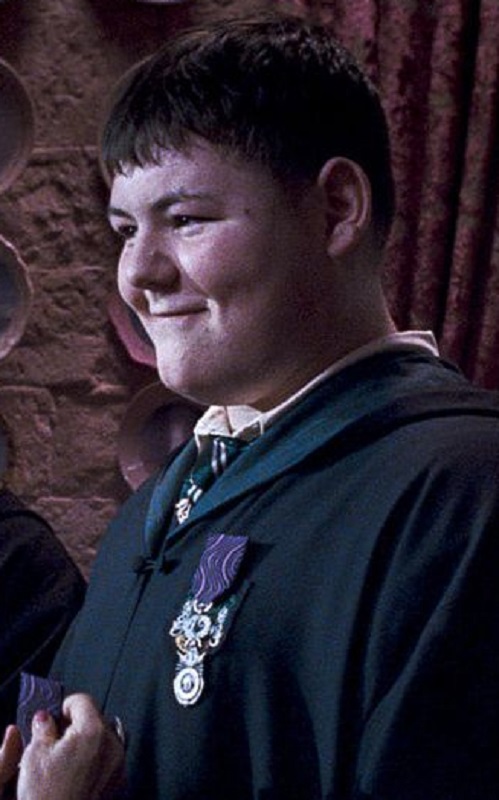

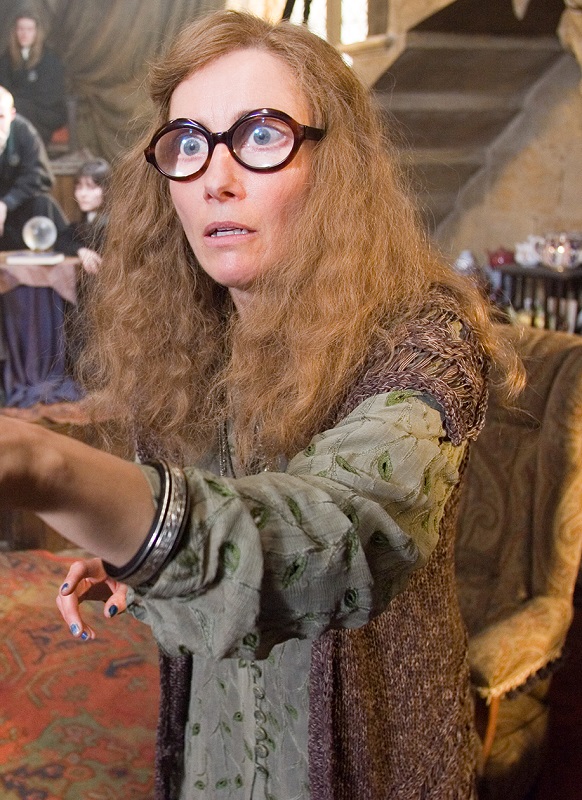

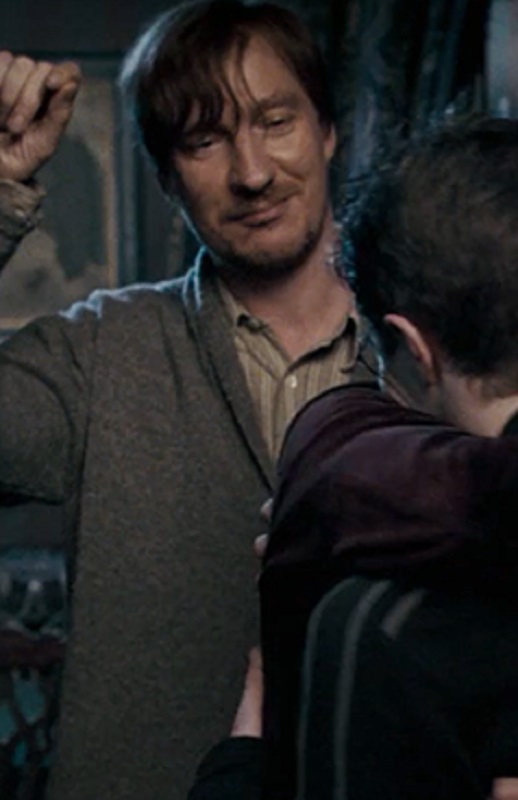



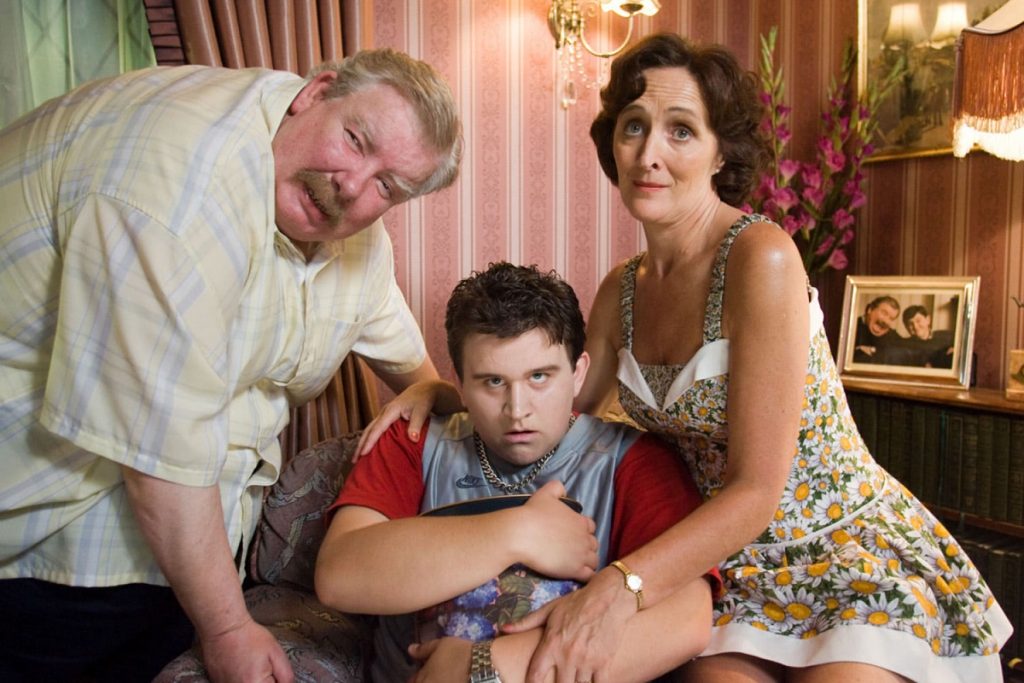
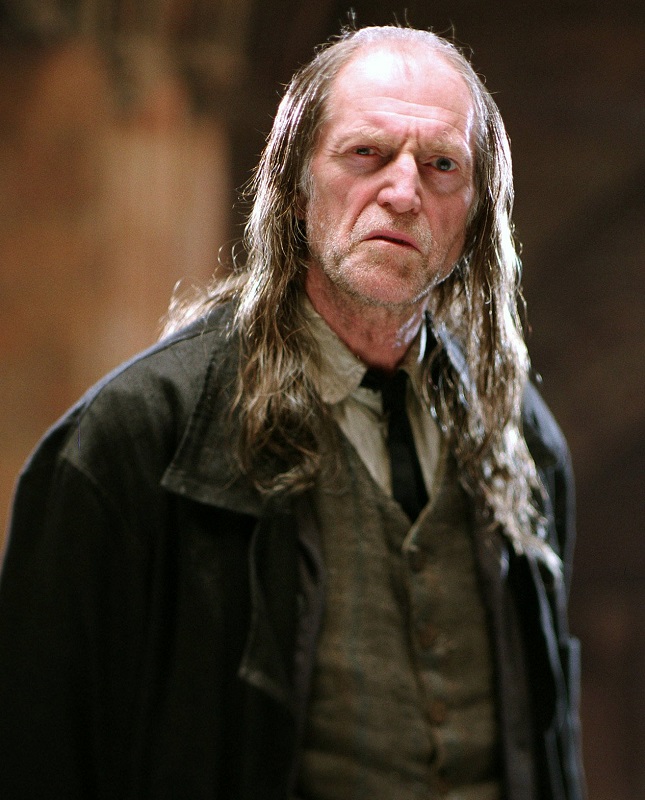




































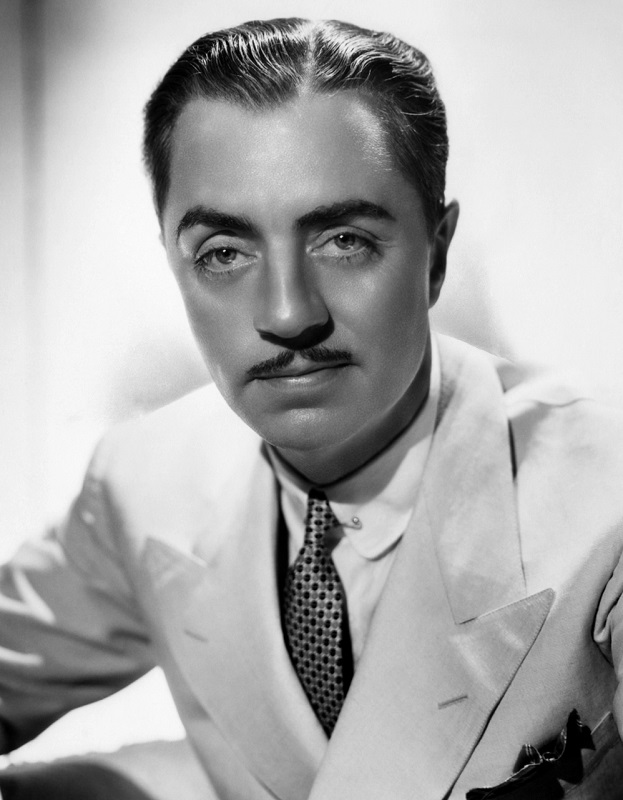

1936 – William Powell
My Man Godfrey
I love William Powell, and not just because he was an incredibly handsome man. He had the acting talent to back up his looks. He was charming and likeable. He handled the fast paced dialogue with wit and what seemed like ease. He was captivating on the screen. And he created a character that just seemed like such a cool guy, a guy anybody would enjoy knowing.
And My Man Godfrey was a delightful movie. It, like Powell, or perhaps because of him, had wit and charm. Powell played the title character of Godfrey Park, a once spoiled son of a rich family who had been emotionally damaged, and who had become so depressed that he had turned to alcohol. His life and his emotional state had spiraled so dramatically that he ended up as a homeless man living in a garbage dump. And he blamed nobody but himself. But living in such low conditions taught him about himself and the man he had once been.
Powell had to believably start the film as a dirty vagabond, which I found fascinating. You see, I’ve only ever seen Powell play well-mannered, wealthy characters, such as Nick Charles in The Thin Man, Florenz Ziegfeld Jr. in the Great Ziegfeld, or Bill Chandler in Libeled Lady. Even in his last film in 1955, as he played Doc in Mr. Roberts, he had an air of class and sophistication. But in this opening scene, he showed a different side of himself. He was a little rougher, a little more cynical, a little more egregious. I’ve never seen him play the bad guy, but I bet he could do it marvelously. In fact by the time he starred in My Man Godfrey, he’d been appearing in films for about fourteen years, and had acted in nearly seventy films. That’s an average of about five movies a year, non-stop, for fourteen years.
But then after he takes the job of the butler for the Bullock family, he becomes that smart and sophisticated aristocrat, despite his position of service. Then Powell was in his element and his gracious charm began to shine. He was a true leading man. There was even a romantic element to the film, though it felt a little forced, especially considering the unsatisfying ending of the movie. But that wasn’t Powell’s fault, and he pulled it off with what seemed like ease and style.



1936 – Gary Cooper
Mr. Deeds Goes to Town
Here, Cooper plays the simple but honest small-town man with the heart of gold. He is innocent and pure, never having been corrupted by the fast-paced life style of the big city. He has a forthright set of morals that lead his code of conduct, a clean and generous heart, and a mind unclouded by greed. In fact, he seems to be a saint whose simplistic and down-to-earth attitudes embody all that is innocent, and righteous, and wholesome. Golly-gee-whiz, he was swell! And despite the ridiculousness of the character, Cooper pulled it off.
Except for his propensity for physical violence. He had a habit of beating the crap out of people in public. It was unrealistic behavior that would have gotten him arrested in today’s society, but for which he was applauded in 1936. Seriously, at the end of the movie, after successfully defending his sanity in court, he gives his unscrupulous, money-grubbing accuser a swift right hook, right there in the court-room, in front of the judge. Oh, that’s ok. That crook had it coming! WRONG! I don’t think that would have been realistically acceptable, even in 1936! Having the moral high-ground doesn’t give you the right to punch your opponent in the face.
But the part seemed to be written for Cooper. He really did a great job bringing out the naïveté of the character, the innocence that Mr. Deeds needed. Cooper made you feel bad for him when he tells off a table of rich jerks for making fun of his quaint simplistic mannerisms. But did he have the right to sock two of them in the kissers in the middle of the restaurant? Of course. This was Gary frickin’ Cooper! He was the perfect All-American poster child. And yes, he did a fine job in the role, despite the unrealistic flaws in the character he was playing.
But the movie was more than a story about Mr. Deeds and his inherited millions. It was a romance as well, and Cooper had a fairly good on-screen chemistry with Jean Arthur who played opposite him. Cooper’s portrayal of innocent puppy-love was good, if not compelling, and his crushing sense of dejection when he learns that she has toyed with his affections is clearly brought across. But was Cooper nominated because the Academy liked his acting, or his character? I wonder.



Harry Potter and the Goblet of Fire.
For a long time, this was my favorite of the Harry Potter movies. I loved the new characters, I loved the climax. I loved the concept of the Tri-Wizard Tournament. I loved the visual effects. And while I still love all those things, later films in the franchise have taken my top spot.
So I’ll start off with the main cast and the characters they play. It is clear that the three leads, Daniel Radcliffe, Rupert Grint, and Emma Watson are growing in maturity, skill, and believability. They were great. I have to give special props to Radcliffe. Of course, he had to shoulder the most screen time, most of the action, and he did a fantastic job. You can really see the steady improvement in his skills as an actor. Grint actually did a great job, even though Ron was kind of a jerk for most of the film. I’m sure he was just following the instructions of the film’s director, Mike Newell. But most improved goes to Emma Watson. Her acting suddenly became more serious, more mature, and it was wonderful to see.
Little by little, over the course of the franchise, Robbie Coltrane’s Hagrid kept getting less and less screen time. By the final film, he was barely in it at all, save for a few short scenes. Michael Gambon did a great job, even with his notorious deviation from the books in a crucial moment. Fans of the books will know what that means. Then there was Cedric Diggory, Fleur Delacour, and Viktor Krum. The real problem with their characters is that they were little more than window dressing. They had very few lines, and were mostly just there to look at, except for Cedric, whose roll was a little bigger. And there was Rita Skeeter, Madam Maxim, and Igor Karkaroff, all of whom were well-cast. And another new Defense Against the Dark Arts professor, Alastor Moody, who was fantastic!
And speaking of the main villain, we finally got a full-fledged Voldemort. Ralph Fiennes did an amazing job! If he was a real person, he would be terrifying! He is nothing less than a psychotic murderer who takes pleasure in his own evil. He was only in one scene, but he made such a big impact. His every movement, spoke volumes about his character, and Fiennes was brilliant! And the scene in which Peter Pettigrew brings him back is the darkest moment in the whole franchise, up until this point. I mean, my goodness! Wormtail cuts off his own hand as part of the spell to resurrect the dark Lord.
So here were some of the things about the movie that bothered me. The fact that his name came out of the Goblet of Fire constitutes a binding magical contract? So… what? Would he die if he didn’t compete? If the whole point of Voldemort’s plan was to get Harry in the graveyard alone for the resurrection spell, why didn’t Barty Crouch Jr. just turn Harry’s shoe into a port-key? And Ron. It didn’t make any sense that Ron believed that Harry was a liar. Hiding behind that small rock would probably not have saved Harry from a blast of Dragon fire. Why couldn’t Harry or Hermione find the bubble-head charm in any of their research for breathing under water? And the movie never explained that It was Barty Crouch Jr., disguised as Moody, who was using the Imperius Curse on Krum in the maze.
And the challenges were all supposedly watched by crowds of spectators. Except that in the first challenge, the spectators would have been in just as much danger as the champions. And when Harry and his dragon were on the roof of the castle, nobody would have been able to see them. And during the second challenge, nobody would have been able to see what was going on under the water. And in the third challenge, nobody would have been able to see the champions inside the ridiculously gigantic maze. The challenges were not, in any way, designed for spectators. Ah, but who cares. It all still looked great on the big screen.
Top 10 Favorite Parts

Harry Potter and the Prisoner of Azkaban
Film number three, and the story is starting to really pick up. It begins to delve into the history behind the main villain, Voldemort. The first two movies were all about establishing characters and locations. In The Sorcerer’s Stone, he tries to come back and fails. In The Chamber of Secrets, he tries to come back and fails. But here, Voldemort isn’t trying another scheme to come back. Instead, we learn a bit about what he was like, who his followers were, and who was opposing him. We find out a little more about Harry’s parents and their friends, and that is what makes this movie so cool.
One of the most interesting, and I might say well-acted, scenes in the movie was the one where Snape confronts Lupin and Black in the Shrieking Shack. There is a reason Gary Oldman, playing Serius Black, is widely considered one of the best actors of his age. And Alan Rickman was great as Professor Snape. One of the coolest choices Rickman made in his performance was when Lupin turns into a wolf. At first, when Snape emerges from the tunnel, he is confronting the children, but as soon as he becomes aware of the werewolf, watch what he does. He throws his arms out and interposes himself between the children and the dangerous creature. I love that his first instinct is to protect the kids. David Thewlis, was perfectly cast as Professor Lupin, and Timothy Spall’s performance as Peter Pettigrew was so delightfully pathetic. And yes, I even liked Emma Thompson as the slightly daft Professor Trelawney.
And the acting from the film’s three leads, Daniel Radcliffe, Rupert Grint, and Emma Watson, just keeps getting better. The themes in the movie were darker and more adult than they had been in the previous films, and the trio did such a great job of keeping up with the more mature nature of the evolving plot. They were great. Also their on-screen chemistry just seemed to be getting tighter and tighter. And lest I forget, I have to mention the addition of Michael Gambon to the cast. Harris may have been a great actor, but I feel he was wrong for the part of Dumbledore. Gambon brought some missing qualities to the character in a wonderful way. He was confident, commanding, and even imposing when necessary.
One of the things I loved about this third installment of the franchise the most was how the aesthetics of the Harry Potter world were given a much needed modern makeover. Nowhere was this change more evident than in the character of Cornelius Fudge, the Minister of Magic. Here, he appropriately looked like he belonged in the 1990s and not the 1790s.
Then there were the Dementors. Talk about terrifying things in a movie that is still mostly geared toward children. These things would have really scared me when I was a kid. They were just black, vaguely humanoid shapes that floated about, wraiths whose tattered robes fluttered like tentacles, even when there was no wind. Such a great design!
OK, now on with the little details about the plot that didn’t sit right with me, and there weren’t many. Rapid-fire style. Flitwick doesn’t have any idea how to conduct a choir. And if this is a start of year feast, when did the student choir have any time to rehearse their performance? Parvati Patil’s Jack in the box clown was more terrifying than the snake. Harry’s assault on Draco and his goons is ridiculous. Harry is under a cloak. You can’t throw a snowball if you are under a blanket. If a Boggart takes the form of a Dementor, does he actually acquire the powers and abilities of a Dementor as well? I would say not. Otherwise Lupin would have turned into a werewolf when he saw the image of the moon in his classroom. During their fight with the Whomping Willow, there is absolutely no way Hermione could have picked Harry up by the shirt, let alone perched unsteadily on a branch moving that quickly, lift him into the air, carry him with her, and accurately throw him into the tunnel. Nope… Not buying that one.
Top 10 Favorite Parts

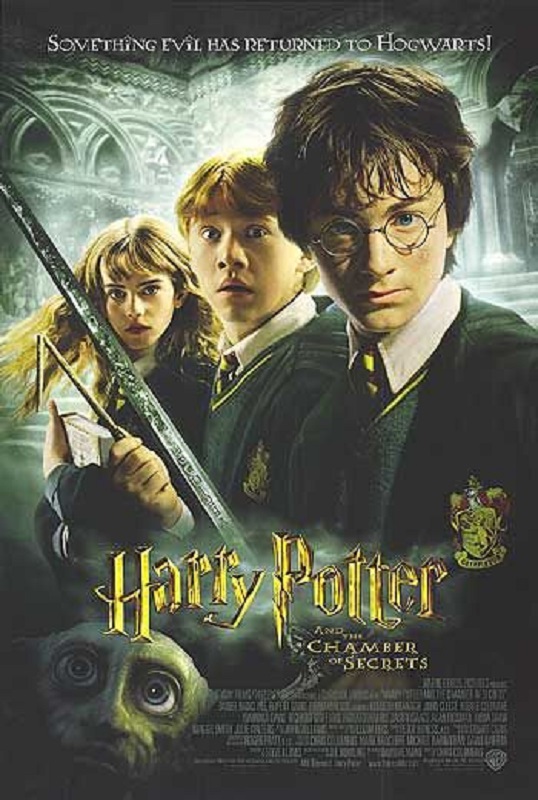
Harry Potter and the Chamber of Secrets
The second installment is, in my opinion better than the first for a number of reasons. First, the story got a little darker than the first film. It got a little more mature. It retained its whimsical nature, but added a touch of weight and a noticeable amount of emotional heaviness. Second, there was more actual magic, which, after all, is why we’ve all come to see the show. There were more spells and more fantastic visual effects. Third, the acting skills of the three main child actors, Daniel Radcliff, Rupert Grint and Emma Watson, were markedly improved.
The tone and the visuals were decidedly darker than the first film, which was all for the better, especially for the adults in the audience. The magic was more creepy and even the visuals were darker. But here, we have Ginny Weasley being possessed by an evil memory recorded in a magical diary, writing on the walls with blood. And then there was the Basilisk, a giant evil snake trying to murder children
Now, I have to applaud the three main actors. They were great. I think Radcliff showed the most improvement. He seemed much more comfortable in the role, and was a lot less… nervous when delivering his lines. He was a lot more confident, and there was a sense of graveness and weight to his performance. Again, Grint did a great job, even though a lot of his performance in this film was just him being scared of one thing or another. But his frightened, squeaky, high-pitched voice was actually funny and made me chuckle to myself. But while Emma Watson was better here than in the first film, she still had a moment or two where her lines had an awkwardness in them that catch my attention every time.
The first movie was all about introducing and establishing the characters. Here were get to develop them and see them grow into fully fledged characters. The three leads, not to mention the entire cast, both child-actors and adults alike, did great. My favorites, aside from the three, were Alan Rickman playing Snape, Maggie Smith as McGonagall, Jason Isaacs as Lucius Malfoy, and Gemma Jones as Madam Pomfrey. Jones had a small role, but I loved her delivery. Who am I kidding? The whole cast was great. But there were also a few new characters that were important to the plot, like Kenneth Branagh as Gilderoy Lockhart, and Toby Jones, who voiced the entirely CGI character of Dobby the House Elf. And yes, the CGI on Dobby was an improvement on the CGI in the first film.
But that’s not to say the film was perfection. Really quickly. The pipes the basilisk was moving through must have been gigantic! And he would have to have been moving around as silently as a ghost. The Phoenix was a huge deus ex machina, having the exact powers Harry needed after his fight with the basilisk and the memory of Tom Riddle, like healing tears, and being able to carry heavy loads. Why did Mr. and Mrs. Weasley send all their children onto platform 9 ¾, except for Ron and Harry, then fail to notice that they had been left behind? None of the teachers ever noticed the crumpled piece of paper in petrified Hermione’s hand? The level of coincidence that saved every basilisk victim from death was staggering. And it was also very convenient that Professor Sprout was growing Mandrakes, the very thing that could cure petrification. And Lucius did not present Dobby with clothes. He gave his servant something to hold for him. He was not giving him clothes as a gift to keep.
But despite all that, I really liked the movie. The visuals were awesome, the plot, while incredibly contrived at times, was fun and often clever. The score was exciting, and the sets and costumes were spot-on. It was darker than the first film, but still not too dark for a younger audience. It was a worthy follow up to The Sorcerer’s Stone.
TOP 10 FAVORITE PARTS












